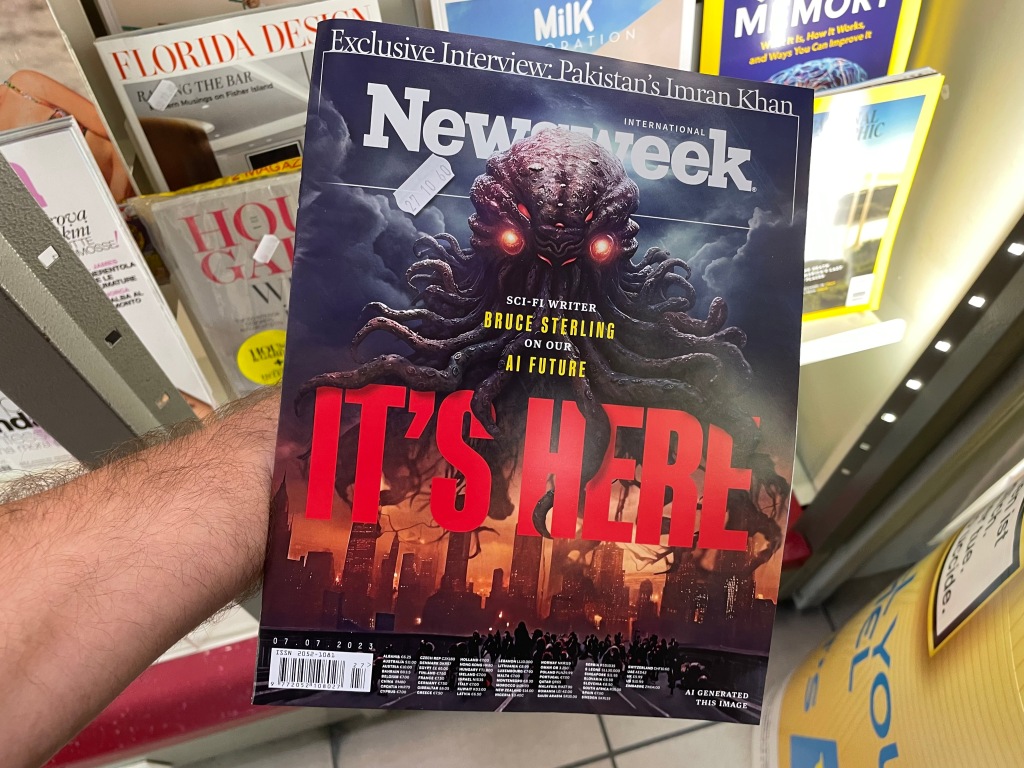
This is the cover of the latest issue of Newsweek, found at the local shopping mall here in Geneva. With a Cthulhu-esque creature (probably generated by an AI system) and the name of our good friend of the Near Future Laboratory Bruce Sterling right above a scary "IT'S HERE" title. This cover corresponds to the following online piece about many things we're dealing with here (not just HP Lovecraft imagery!).
In his article, Bruce deals with teratology, i.e. the science/discourse about monster (the term was borrowed from "tératologie" (French), which in turn was formed from the Greek τέρας teras (word stem τέρατ- terat-), meaning "sign sent by the gods, portent, marvel, monster", and -ologie (-ology), used to designate a discourse, science, or theory of some topic). His point is that "new AI" (i.e. "Large Language Models" and text/image generators) has "AI folklore. Authentic little myths. Legendry", namely a "weird" symbolism people need "so they can learn how to feel about life". Bruce discusses such symbolism with various examples of AI idioms, which have beast-like connotations: Roko's basilisk, the "Masked Shoggoth" cartoon I mentioned this week, the mythical, or the "Paperclip Maximizer". As Bruce says, they are "all the poetic children of Mary Shelley's Frankenstein, the original big tech monster" with "more staying power than the business op-eds, technical white-papers or executive briefings. Folk tales catch on because they mean something."
To him, the current "entities" of AI are not only "stochastic parrots", they are also mythical beasts that gives him a sense of an "high-tech Mardi Gras", not the first one: "The street will find its own uses for these monsters." as Bruce says, paraphrasing William Gibson's famous quote about how laymen repurpose technologies for their own need/context. And like all Mardi Gras, there'll be a sense of disillusionment, followed once again by a new kind of AI Spring, with perhaps new creatures.